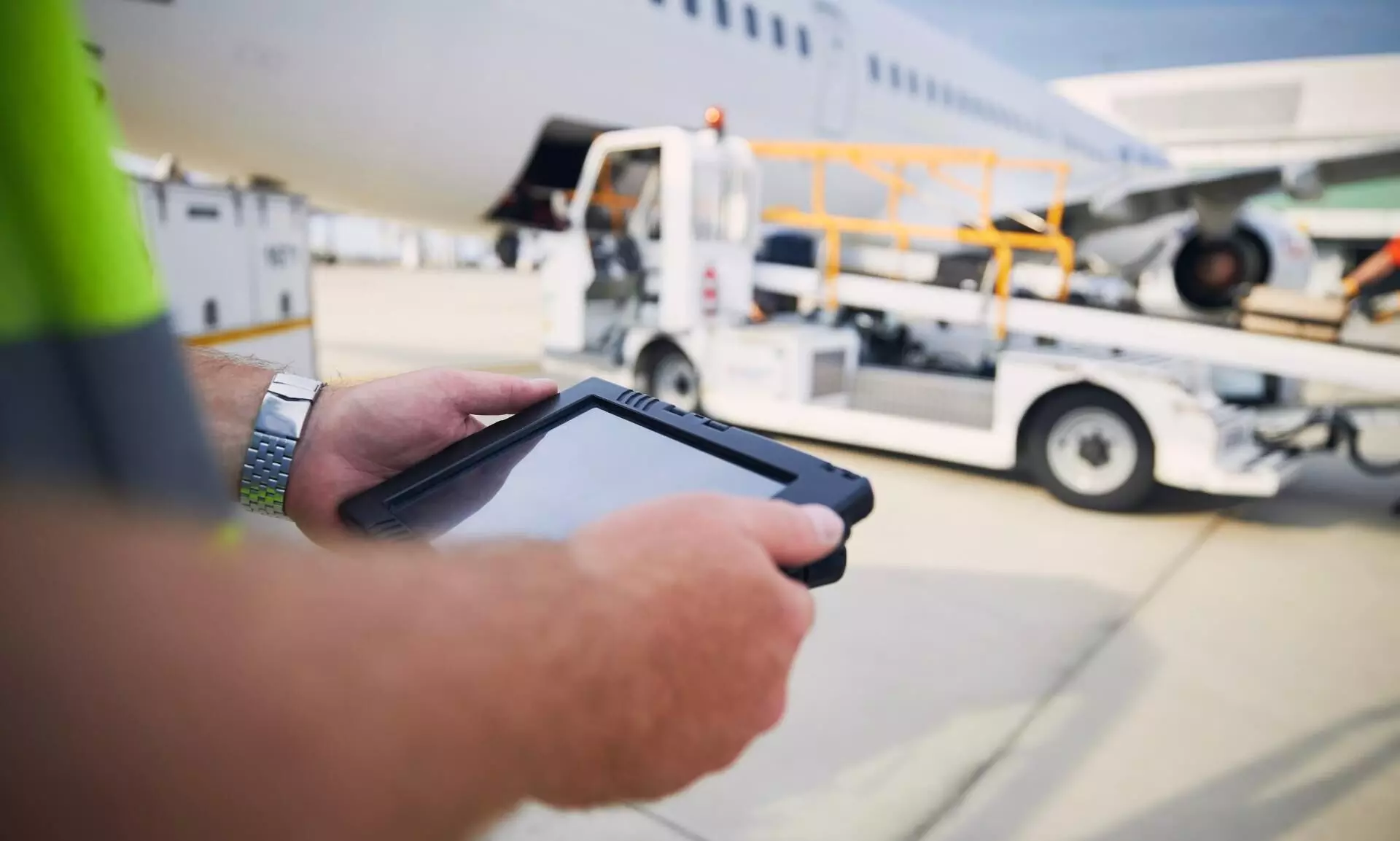
What stops ONE Record from widespread adoption, and what's at stake?
IATA's ONE Record promises a digital leap for air cargo, but reluctant stakeholders and legacy mindsets are slowing its adoption, putting the industry’s future on hold.

As the air cargo industry faces mounting pressure to modernise, digitalisation is no longer optional but essential, and at the heart of this shift is ONE Record, IATA’s ambitious standard designed to unify data sharing across the supply chain. While its promise is clear—real-time visibility, seamless interoperability, and reduced reliance on outdated messaging systems—the path to adoption is far from smooth. This piece dives into the resistance from key stakeholders, the commercial and technical roadblocks they face, and how innovators are working around them to push the industry forward.
Few understand its full implications better than Matthias Hurst, Managing Director of the air cargo consultancy firm Colog and Chairman of the Digital Cargo Working Group at IATA.
“The real change is data,” Hurst begins.
In an industry long constrained by legacy systems and fragmented communication, ONE Record offers a unified, standardised way for stakeholders—from shippers and forwarders to airlines and customs—to access and exchange data seamlessly and in real time. Unlike traditional EDI messaging, which replicates paper-based document exchange, ONE Record allows stakeholders to interact directly with the data itself.
This, says Hurst, is a game-changer.
Take e-commerce: now representing over 20% of global air cargo, the volume and speed at which parcels move make traditional systems unsustainable. “What makes integrators like UPS competitive is their global infrastructure and real-time processing. ONE Record lets the broader industry build a shared digital ecosystem to match that efficiency, without needing to own everything.”
In a fast-moving world where disruption is inevitable, the ability to respond in real-time is what separates resilience from chaos. At the opening of the IATA World Cargo Symposium (WCS) in Dubai last month, Brendan Sullivan, Global Head of Cargo at IATA, painted a vivid picture of what air cargo can and must become—fast, transparent, and digitally connected. To illustrate his point, he recounted a recent high-stakes incident that captured global attention: a fire at an electrical substation that brought operations to a standstill at a major airport hub in Northern Europe. The disruption prevented a flight carrying a life-saving pharmaceutical shipment from landing—an urgent consignment intended for a cancer clinic.
“Every hour counted,” Sullivan emphasised, using the episode to frame the industry's growing need for integrated, agile digital systems.
"The inspector," Sullivan explained, “had just completed IATA’s dangerous goods training. He was helped by DG AutoCheck, which caught the mismatch between what was declared and what was in the box. And the airline’s station was CEIV Lithium Batteries-certified, meaning strong, consistent processes were in place."
“That’s the power of digitalisation in the future. If safety is our foundation, digitalisation is our accelerator. It makes us faster, more transparent, and more resilient,” he added.
“Forwarders are the ones where the money comes in. If they adopt ONE Record, the airlines and ground handlers will follow naturally.”
Matthias Hurst, Colog
Despite its promise, industry-wide adoption of ONE Record has been slower than expected.
Sullivan urged airlines and forwarders to act now and implement ONE Record, governments to accept ONE Record in their regulatory data filing requirements, and developers to build compatible, secure, and open platforms.
The adoption is particularly slow among freight forwarders, according to Hurst.
“The real gap is the forwarding community,” he emphasises. “Forwarders are the ones where the money comes in. If they adopt One Record, the airlines and ground handlers will follow naturally.” But most are bogged down with internal challenges, legacy systems, and outsourcing to solution providers who are reluctant to cannibalise their existing messaging-based revenue streams.
Still, change is underway. Solution providers like Riege Software now include One Record as a native feature, forcing others to evolve. “It’s no longer about whether One Record will happen—it’s how fast you adapt,” he says.
ONE Record is also causing discomfort among cargo community systems (CCS) and legacy tech providers who make money from relaying and converting EDI messages.
“If everyone uses ONE Record, you don’t need message relays anymore,” Hurst states. “Some CCS providers will need to switch to hosting ONE Record servers or offering new services. Otherwise, they’ll be left behind.”
Some already have. Providers like GLS Hong Kong and CCN Singapore have pivoted to offer ONE Record-ready platforms. Others, like WiseTech Global, plan to be ready by January 2026—the informal deadline the industry has set for full readiness.
"We urge airlines and forwarders to act now, governments to accept ONE Record in their regulatory data filing requirements, and developers to build compatible, secure, and open platforms.”
Brendan Sullivan, IATA
Scott Sangster, General Manager for Global Logistics Service Providers at Descartes, acknowledges the gap between the promise of ONE Record and its current level of industry adoption. “There are players out there that are struggling to figure out where their monetisation model fits if we move to ONE Record,” he noted during the IATA World Cargo Symposium in Dubai.
According to Sangster, one of the major hurdles is legacy system infrastructure and the business models that have been built around it. "Our goal is to ensure our systems are capable and ready, so when customers adopt it, we can support them immediately. We can't dictate when a customer should adopt it, but we must be prepared."
But the barriers aren't just technological—they're also commercial and cultural. “We’re seeing reluctance from some parts of the ecosystem because ONE Record requires a shift from document-based to data-centric thinking. It’s not just a new format; it’s a new mindset.”
Despite these challenges, Sangster believes the direction is clear. “At Descartes, we’ve already begun working with Lufthansa Cargo using ONE Record to share shipment status updates. We’re proving the model, but broader adoption will depend on solution providers evolving their platforms and customers demanding interoperability.”
He emphasises that pressure will have to come from forwarders and shippers. “If the market starts saying, ‘We only want to use platforms that are ONE Record-compliant,’ that will force hands and accelerate change.”
“We are testing the software on the international supply chain. Our aim is to challenge the ONE Record server in terms of performance and other capabilities needed to make it living and running.”
Harald Sieke, Fraunhofer IML
Meanwhile, there has been positive news as well. One of the strongest driving forces behind the shift to ONE Record is the Fraunhofer Institute for Material Flow and Logistics (IML), based in Germany.
A government-backed initiative called Digital Testbed Air Cargo, led by Fraunhofer IML, is spearheading the implementation of ONE Record in real-world scenarios, especially in e-commerce logistics chains. At the centre of this effort is the development of a crucial piece of software—NE:ONE Server—which enables seamless connection and data exchange between stakeholders using One Record.
“We started looking into ONE Record four or five years ago,” said Harald Sieke, Head of Aviation Logistics at Fraunhofer IML. “At that time, it wasn’t really working. They had working groups initiated at IATA, and we took part in them. We really drove forward the standard itself.”
The Digital Testbed Air Cargo project received €14 million in funding from the German government and brought together key players like Lufthansa, Frankfurt Airport, Munich Airport, and DB Schenker.
“We gathered their requirements and gave a few hundred thousand euros to an external company to develop our software. The NE:ONE Server software that we developed is based on ONE Record,” said Sieke. “It is the piece of software that you need to connect all partners.”
But Fraunhofer IML didn’t stop at building the software. They released it as open-source—free for anyone to use.
“We said, now we put it online for free, open source. If you want to push forward a standard, you need something for free that people can try, not something you pay for. Since we put it online, each month, 2,000 stakeholders worldwide have downloaded this software.”
According to Sieke, the next phase is already underway. Fraunhofer is developing a ONE Record-ready supply chain, particularly within the fast-growing e-commerce space.
“We are testing the software on the international supply chain. Our aim is to challenge the ONE Record server in terms of performance and other capabilities needed to make it living and running.”
Fraunhofer IML’s presence at IATA hackathons has helped bridge some of this awareness gap. Sieke and his team have participated in several hackathons, often winning or placing in major categories with their tools, like NE:ONE Play, a visual interface that simplifies the complex One Record data model.
“The semantics of One Record are confusing. So we built a tool making it more visible—a mind-map style visualisation where you can click on a pallet and see what’s loaded on it.”
As One Record gains traction, Sieke is clear-eyed about the timeline.
“I think if we keep pushing, it will move faster than before. But it’s a natural process. You have your early adopters, your laggards. Still, don’t expect everyone to be ready by January 2026.”
Fraunhofer IML's commitment is rooted in neutrality. As a nonprofit research organisation, it doesn’t build or sell commercial products. Instead, it enables industry transformation through research, development, and collaboration.
“We’re developing robots and software, and then we look for industry to buy the license and build and sell it. We want to stay out of it. Our clients expect an open view. If we had our own portfolio, we’d be biased.”
With industry adoption of ONE Record still underway, Fraunhofer IML’s open-source, government-funded approach may just be the model the rest of the world needs.
“The biggest problem for some companies is if they are not doing it,” Sieke said plainly. “The market is moving, and if you’re not realising it, it’s a danger for you.”
“We’re seeing reluctance from some parts of the ecosystem because ONE Record requires a shift from document-based to data-centric thinking. It’s not just a new format; it’s a new mindset.”
Scott Sangster, Descartes
ONE Record isn’t coming—it’s here. Those waiting on the sidelines risk not only falling behind but becoming obsolete. As Matthias Hurst puts it, “If you’re not able to innovate, it’s lunchtime.”
The message is clear: adapt now or risk becoming irrelevant in an industry that’s rapidly digitising—and finally catching up to the needs of the modern world.
From life-saving reroutes and open-source breakthroughs to commercial hesitations and cultural inertia, the story of ONE Record is still being written. The technology exists, the standards are set, and the urgency is real—but the clock is ticking. What happens next depends not on innovation itself, but on how willing the industry is to let go of the past and step fully into a digital future.
The article was originally published in the May 2025 issue of The STAT Trade Times.

